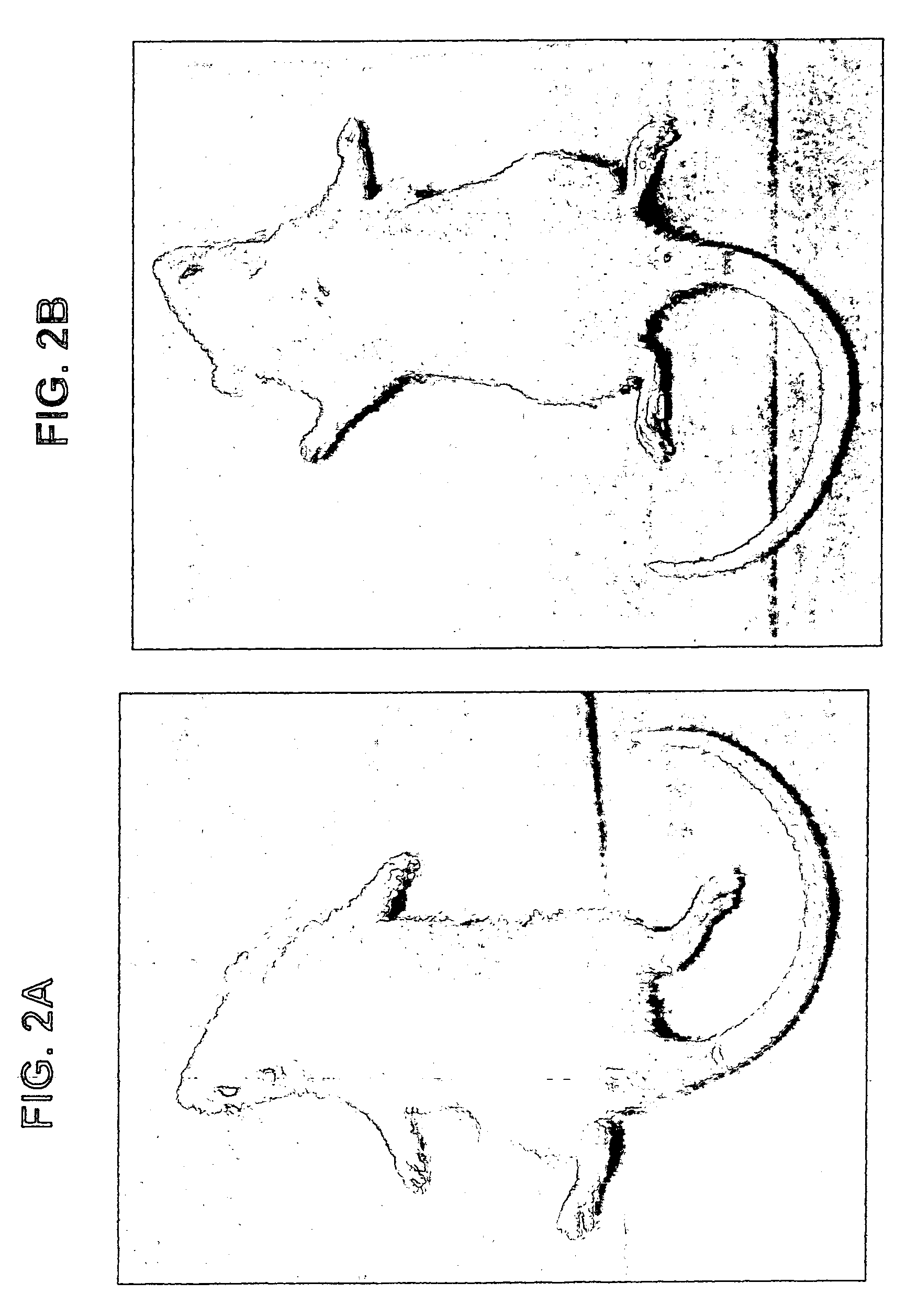A3AR agonists for the treatment of inflammatory arthritis
a technology of a3ar and agonists, applied in the field of therapeutics, can solve the problems of inability to prove, deformity of joints, inflammation in various organs of the body, etc., and achieve the effect of reducing pain, swelling, and maximum therapeutic
- Summary
- Abstract
- Description
- Claims
- Application Information
AI Technical Summary
Benefits of technology
Problems solved by technology
Method used
Image
Examples
example 1
Experimental Procedures
Materials and Methods
[0065]IB-MECA and Cl-IB-MECA were purchased from RBI / Sigma (Natick, Mass., USA). For both reagents, a stock solution of 10 μM was prepared in DMSO and further dilutions in RPMI medium were performed.
1. Adjuvant Arthritis-Induction
Animal: Rats: LEWIS. Age: 9–12 Weeks. Sex: Female
[0066]Disease induction: 10 microgram / ml Heat killed Mycobacterium tuberculosis H37Ra (Difco, Detroit, Mich., USA) present in / IFA=Incomplete Freund's Adujvant (Sigma), were injected in an amount of 100 microliter at the tail base, S.C. (Sub Cut) In accordance with the ref: Current Protocols in Immunology ed. John E. Coligon, (1996) Unit 15.5.
2. Collagen-Induced-Arthritis
[0067]Male DBA mice, aged 10 weeks, were injected SC with 100 μl of Type II collagen 200 μg in complete Freund's adjuvant (CFA). On day 21 a booster injection of the same emulsion was administered. Mice were inspected daily for symptoms of clinical arthritis.
3. Arthritis Evaluation
[0068]The inflamma...
example 1a
Effect of 10 and 100 μg / kg IB-MECA on Inflammatory Intensity-adjuvant Model
[0074]Rats were induced with adjuvant arthritis as described above. Animals were divided into three groups each consisting of 10 rats. Group 1 served as control while group 2 was administered with 100 μg / kg PO IB-MCA a day, and group 3 was administered with 10 μg / kg PO IB-MECA a day. Treatment with the active substance began 7 days disease induction. The results are shown in FIG. 1A. As can be seen, administration of 100 μg / kg or 10 μg / kg a day was effective in abolishing almost completely the inflammation as assessed by the inflammation intensity score. FIG. 1B shows the same experiment repeated with 1 μg / day. As can be seen even in this low dose a significant reduction was evident. FIGS. 2A and 2B show pictures of a control untreated rat induced with adjuvant arthritis (2A) and a rat treated with 10 μg / kg a day IB-MECA (2B). As can be seen while the paws of the untreated rat appear extremely swollen and red...
example 1b
Effect of 10 and 100 μg / kg Cl-IB-MECA on Arthritis Score-Adjuvant Model
[0077]Rats were induced with adjuvant arthritis as described above. Rats were divided to tree groups each consisting of 10 animals. Group 1 served as control while group 2 was administered with 100 μg / kg PO Cl-IB-MECA a day, and group 3 was administered with 10 μg / kg CL-IB-MECA PO a day. Administration was initiated at day 7 after disease induction. The results are shown in FIG. 4.
[0078]As can be seen administration of 10 μg a day was significantly more effective in improving the arthritis score than administration of 100 μg / kg a day indicating that surprisingly the active ingredient does not have a classic “dose response effect” wherein the higher the dosage the more pronounced the effect, but rather a bell-shaped curve effect, where increase in the dosage caused decrease in the therapeutical effect. FIGS. 5A to 5D show photographs of a control untreated rat induced with adjuvant arthritis (5A) and a rat treated...
PUM
| Property | Measurement | Unit |
|---|---|---|
| weight | aaaaa | aaaaa |
| weight | aaaaa | aaaaa |
| weight | aaaaa | aaaaa |
Abstract
Description
Claims
Application Information
 Login to View More
Login to View More - R&D
- Intellectual Property
- Life Sciences
- Materials
- Tech Scout
- Unparalleled Data Quality
- Higher Quality Content
- 60% Fewer Hallucinations
Browse by: Latest US Patents, China's latest patents, Technical Efficacy Thesaurus, Application Domain, Technology Topic, Popular Technical Reports.
© 2025 PatSnap. All rights reserved.Legal|Privacy policy|Modern Slavery Act Transparency Statement|Sitemap|About US| Contact US: help@patsnap.com



